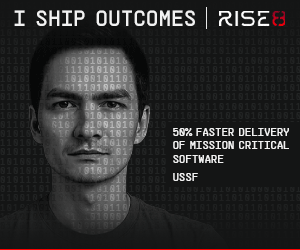The Pentagon's Defense Innovation Unit is looking for cheap commercial drones to perform a variety of battlefield missions for multiple services, according to a recent solicitation. The DIU wants small business and "nontraditional" contractor involvement in the project, which has a short response time.
Operational Imperative 4: Tactical Air Dominance

 ADVERTISEMENT
ADVERTISEMENTOperational Imperative 4: Tactical Air Dominance
Pratt & Whitney received a $1.31 billion contract Sept. 30 to continue development of the F135 Engine Core Upgrade for the F-35 fighter. The program passed Preliminary Design Review in July, and, barring any problems, will go into Critical Design Review within a year.
The Air Force thinks Collaborative Combat Aircraft can be bought for as little as $1,200 per pound—about a third of the cost of crewed fighters—but mission equipment needs to be aligned to that lower price.
There are a lot of new demands on the government-industry propulsion enterprise—ranging from exquisite new fighter engines to cheap, off-the-shelf powerplants for drones—that will require sustained support, experts said.
It'll take up to 18 months for Lockheed Martin to deliver the 100 or so F-35s that went directly from production line to storage, awaiting the completion of Tech Refresh 3 testing. Customers haven't complained about the order in which the backlog is being delivered.
The Air Force is hoping to slash the cost of the Next-Generation Air Dominance fighter from hundreds of millions per copy to less than $80 million, secretary Frank Kendall said. It might be done by disaggregating the fighter’s functions and possibly making it uncrewed.
Pratt & Whitney is working with the Air Force to keep the F-22 credible beyond its previously-planned 2030 sunset by tracking parts usage to schedule maintenance only when actually needed. It's also pursuing additive parts printing as a cost-saver.
The Air Force is reconsidering how it gains air superiority—and whether it needs a manned sixth-generation fighter to achieve it, acquisition boss Andrew P. Hunter said.
Advances in artificial intelligence and software development will be key to two of the Air Force’s top programs: the DAF Battle Network, which connects sensors and shooters around the globe, and Collaborative Combat Aircraft autonomous drones, service acquisition executive Andrew Hunter said Aug. 7

